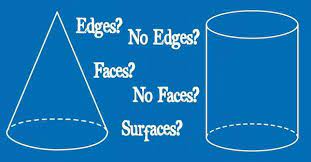In the world of geometry, a playful debate rages between the advocates of two simple yet fundamental shapes: the cone and the cylinder. Both shapes are taught in early mathematics, yet their properties continue to fascinate mathematicians and students alike. But what is it about these two structures that stir such a rivalry, and what are the points of contention? This article will delve into the heart of this debate, exploring the complexities, applications, and elegant geometry of cones and cylinders.
Picture a cone as an ice cream cone or a party hat, a perfect example of this one-vertex figure tapering smoothly from a flat base to a single point. On the other side of the ring, visualize a cylinder akin to a soup can or a pencil holder – with two congruent circular bases connected by a curved surface. Both are three-dimensional figures but differ significantly in their attributes and applications.
Volume Comparison:
A central argument in this debate is which shape can hold more. When comparing volumes, cones, and cylinders that share the same base and height contain different amounts. A cylinder’s volume is calculated using the formula V = πr²h, while the volume of a cone is exactly one-third that of a cylinder with identical dimensions (V = 1/3πr²h). This surprising fact leads to intriguing discussions regarding efficiency when it comes to packaging and storage – should one opt for cyndrical or conical containers?
Surface Area Equations:
Surface area also factors into this heated discussion. The surface area of a cylinder comprises two circular areas plus the rectangle that wraps around (A = 2πrh + 2πr²), while a cone’s lateral surface can be unrolled into a sector of a circle (A = πrl + πr²). The simplicity versus complexity of calculating these areas has implications for design and manufacturing where minimizing material waste is crucial.
Real-world Applications:
Each shape holds its own in different industries. In architecture, cones are valued for their intrinsic strength distribution properties which often make them suitable for roofs – think of majestic church steeples. In contrast, cylinders have made their place as structural elements in construction thanks to their ability to evenly distribute stress along their axis.
The Icing on Top:
What debate would be complete without mentioning the frosting or ice cream theory? It proposes that if you had both shapes with equal volume as containers for ice cream, scooping from a cylinder would consistently yield more dessert at each scoop’s edge than from a pointy cone. Clearly, culinary preferences may tip scales one way or another!
In conclusion, The Cone vs. Cylinder Debate will likely continue as both academic exercise and light-hearted banter among geometry enthusiasts. While each shape has its benefits depending on context and use, they both remain cornerstones in understanding three-dimensional space – inspiring wonder and calculation in equal measure. Whether it’s for structural integrity or maximizing ice cream enjoyment – cones and cylinders stand tall in their own right in the geometrical arena.





